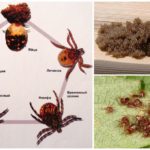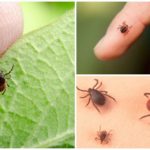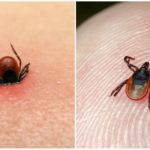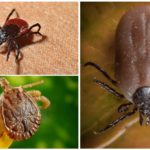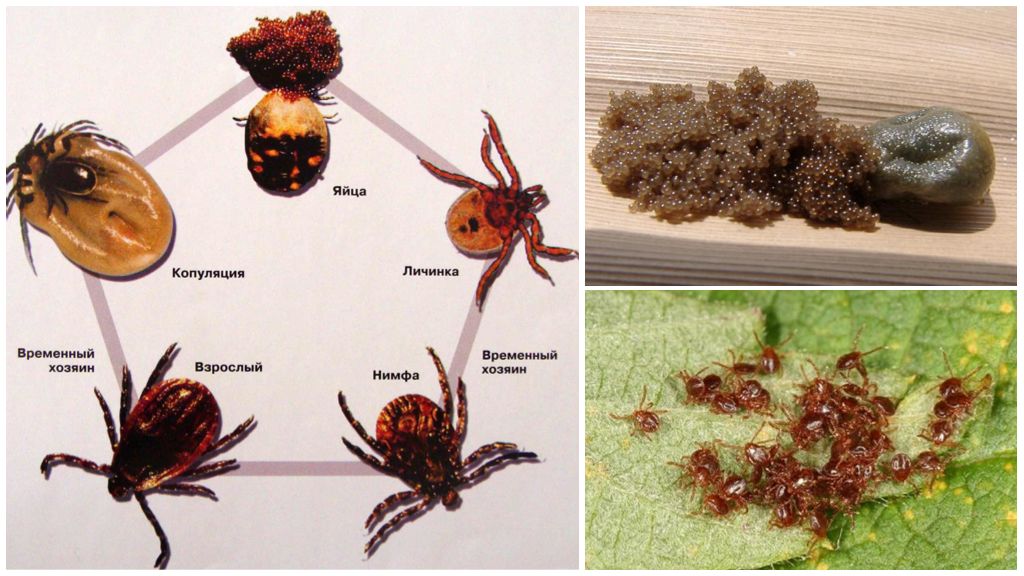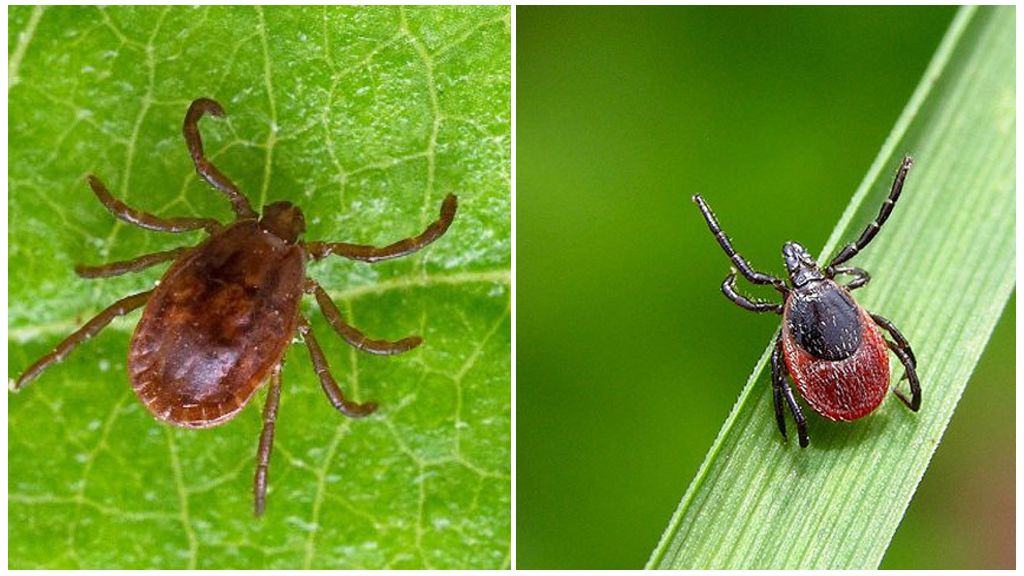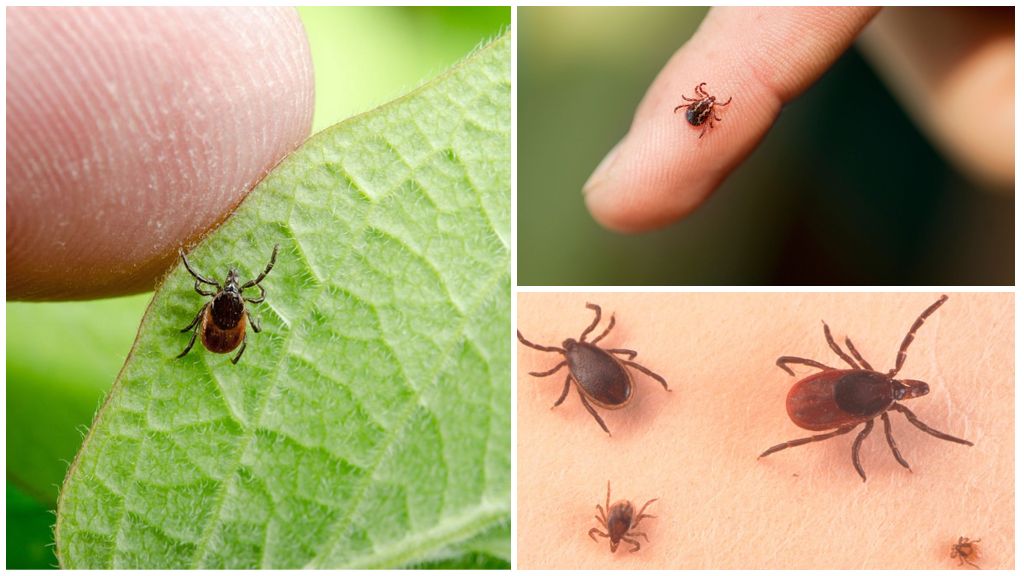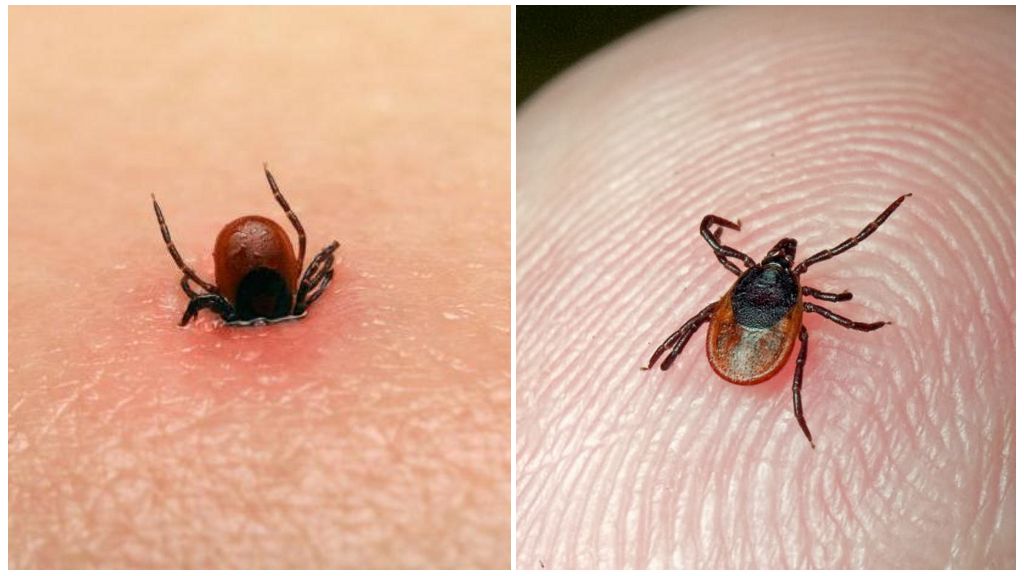All about ticks
Content
- Tick breeding
- Pliers
- Mite appearance
- Tick bite
- Pliers
One of the most numerous and ancient groups of arthropods that arose during the time of dinosaurs and survived to our day - ticks, has more than 50 thousand species. Even acarologists, scientists who study this subclass, do not know everything about ticks. Many species have been found and described, but due to the inaccessibility of arachnid habitats, little is known about their lifestyle and importance for ecosystems.In more detail studied species that live next to a man and often parasitic on him.
Who or what is a tick
Small, six-legged and crawling. Who is it? Certainly some kind of insect. In fact, when answering a question, the tick is an insect or an animal, you need to choose the second option. These peculiar creatures belong to the animal world and are arachnids. Unlike spiders, venomous mites do not exist. That is, they do not use the secret of their salivary glands to kill the victim.
The Latin name for ticks is Acari. The name refers to the entire subclass. A section of zoology that studies these arthropods is called acarology.
Interesting!
Ticks are not insects, but traditionally many acarologists are members of the Russian Entomological Society.
People often attribute to insects any small multi-legged life forms, so this confusion will continue in the future. The insect subclass of Akari is also related to the developmental stages, which are usually absent in the more developed forms of life. In total there are four such arthropod stages:
- egg;
- larva;
- nymph;
- adult individual
Depending on the type of mite, the nymph also has from 1 to 3 stages of development.
Egg
Tick eggs under a microscope resemble fish eggs. It is a large cell, covered with a soft shell and containing the yolk, cytoplasm and nucleus. The outer shell may be smooth or ribbed. Eggs have different colors and two shells: the outer is dense, and the inner yolk is thin. Egg shape can be:
- round;
- oblate;
- elongated;
- oval.
Each tick species has its own specific egg shape.
The size of the egg relative to the body length of a mature female is very large. Usually the egg is larger than the last segment of the abdomen. After the eggs mature, the female lays them in a secluded wet place.
Because of this, some species of ticks have developed a very original way of live birth: posthumous. With this method, after the maturation of the eggs to fall, the female does not lay, but dies. Eggs remain for the winter in the body of the female. In the spring, the larvae hatch and gnaw out on the outside. One of the reasons ticks die from is procreation. According to experts, the peculiarity of this breeding method was due to the fact that eggs are too large to be laid without the death of the female.
Interesting!
In two species: bread and pot-bellied mites live true birth.
Pre-terminal stage
Before hatching, ticks have a fixed stage. At this time, the larva almost ready for release freezes motionlessly, consuming the last reserves of protein. In most species, this stage lasts a very short time and is difficult to notice.
Larva
After exiting the egg, the larva already resembles an adult, but has considerably smaller dimensions and in its structure there are some differences:
- 3 pairs of legs;
- there are no genital buds;
- no setae;
- no last three abdomen segments.
On a note!
In some forms, the larvae are transparent and it is almost impossible to see it with the naked eye, since its size does not exceed 0.5 mm.
Nymph
Not all types of ticks go through all three stages in their development. Three ages are present in ixodic and argas mites. Sarcoptoid and teraniche are costing 1 st and 3 rd ages. Thrombidiform mites pass through the first two ages. Each age has its own name:
- protonymph;
- deutonymph;
- tritonym
The protonymph has 4 pairs of legs, on which there are still very few setae. Also at this stage, a genital opening and 2 genital setae appear with a pair of genital tentacles.
In the daytona, the number of setae on the paws increases.6 genital setae and 4 genital tentacles appear.
Tritonymus continues to grow into genital tentacles (already 3 pairs) and bristles. The number of tactile setae on the legs and on the surface of the body increases. If you look at the images of all three forms, you can see that the anatomy of the nymph of the third age is almost no different from the morphology of ticks.
Mature individual
The structure of a tick is usually considered by the example of ixodid ticks as the most common in the world. This group is the most dangerous.
External structure
A tick usually has an oblong body, where the chest and abdomen are fused together. Hungry individuals are flat at the top and bottom. Saturated females resemble a leathery pouch. The “skin” of a tick is actually a chitinous cuticle. On the back of arthropods, a sealed cuticle forms a protective shield. In females this shield is located only on the front part of the body, in males it covers the entire dorsal part entirely. Under the cuticle are the internal organs and muscles of bloodsuckers.
Interesting!
Some ixodid species have scutes on the underside of the body.
In the photo of the tick under the microscope, you can see the side appendages of the arachnid.In many species, the length of the appendages is so different that it is often impossible to understand how many paws a tick has. But all these species of animals have only 4 pairs of legs. What may seem to be the front paws, in fact, are chelicerae and pedipalps of the tick, which are part of the structure of the oral apparatus.
On a note!
Chelicerae and palpi in ticks also belong to the limbs. These limbs could once have been a pair of legs, but today they are included in the mechanism of the oral apparatus.
Head
The head is so small that the proboscis seems attached directly to the body. The piercing-sucking mouth organs of the tick have changed significantly compared with the gnawing apparatus. The proboscis mite has a hexagonal or rectangular base. The structure of the proboscis is quite complicated:
- chelicera;
- pedipalps;
- hypostam.
The latter in Ixodes is provided with teeth, helping to hold onto the victim. Chelicera in some species of arthropods turned into a kind of scissors. At sucking they have grown together in a hollow tube-stylophor. Stilofor - protection for stilettos formed by modified chelicera fingers. In bloodsuckers, these "fingers" were transformed into a tube through which blood flows into the digestive tract.
On a note!
Pedipalps (palps) have only auxiliary significance and are often reduced.
Legs
The adult individual has 4 pairs, the larva has three. The feet of a tick are homologous to the limbs of insects:
- pelvis;
- swivel;
- hip;
- knee;
- shin;
- foot.
Since the tick clings to the victim, first with the front pair of legs, the legs of predatory and parasitic species are equipped with hooks and suckers to help hold the animal.
In most species of mites, the pelvic part is immobile and has grown together with the body. Only primitive species retain pelvic mobility. Considering the microscopic dimensions of the objects of study, it is possible to examine segments of the legs only under a microscope under high magnification. In the illustrations of the arachnoid legs in close-up, it is clear that the segments are very similar and it is very difficult to distinguish them from each other.
During the lifetime of the limb, the tick can be modified. The main anatomical change occurs with the hind limbs. In predatory species, they are bent and look like ticks, with the help of which the arthropod is kept on the victim. In the lead “calm” parasitic lifestyle of scabies itch, the legs are thickened, shortened and have powerful suckers.Tetranichus mites have glands on their paws, which produce a sticky liquid that helps to move on smooth surfaces.
Internal systems
The diagram shows a female ixodic tick, which was written by blood, indicating the purpose of the depicted internal organs.
Internal life support systems include digestive and respiratory. The circulatory system of ticks is not developed. The analogue of the heart muscle is located on the back and has an oval shape. From it leaves the aorta. The vascular system is not developed, and the blood, a white liquid from a tick, is poured into the body cavity.
The digestive system is represented by:
- mouth opening;
- two salivary glands;
- throat;
- esophagus;
- intestines;
- anus.
The organs of excretion of ticks include not only the last, but also some more. The intestine has a more complex structure:
- midgut with multiple lateral blind branches;
- small intestine;
- back gut.
Adjacent to the posterior intestine is a rectal bladder, one of the organs of excretion.
The organs of excretion, in addition to the rectal bladder, include the salivary glands located in the mouth.The salivary glands are necessary for parasites to store anesthetic secretion, which is used for injection when the skin is pierced with the proboscis.
Important!
Thanks to the secret of the salivary glands, the bite of an arthropod is invisible to the victim.
The rectal bladder is a repository for waste products, as it contains the products of digestion and dead cells of the midgut. This also includes the causative agents of diseases that are in the intestines. For this reason, feces from ticks can also be hazardous to health.
Respiratory system
When a tick bites into the skin, it does not breathe in the anus, but through breathing holes — stigmas at the hind legs. When inhaled, air enters the trachea - thin tubes that run along the entire body of the arthropod. Stigma in ticks are protected by special organs - peritrames. Ixodic peritremum has plates that are adjacent to stigma from the sides and back. In other groups - tubules of varying degrees of length and shape.
The respiratory system in this subclass of arthropods is studied very poorly. The question of what the tick breathes, in fact, remains open. If we talk about the respiratory system, it is the trachea.If we consider the composition of gases, the needs of arthropods have not yet been studied. There is a group of granary ticks capable of living at a CO₂ concentration of 30%.
Little known threat from ticks
Information that ticks are carriers of dangerous infectious diseases is today known to all. But the fact that this group of arthropods can be a carrier of other parasites is also of medical significance.
The question of which parasite the tick is an intermediate host, cares little for the average man in the street. And rightly so, since the parasites are quite exotic. These are worms.
There are two types of worms that can cause inermicapsyferosis and bertiellosis in humans. The final owners of worms are rodents and rabbits in the first case and monkeys in the second. A person becomes infected with these worms if the tick is accidentally swallowed. In medicine, disease prevention has not been studied.
Interesting facts about ticks
There are types of ticks that can breed from the nymph stage, and some in the larval stage. Often, these species lack the final phase of tick metamorphosis - an adult individual.
There are types of ticks living in the water.Thick stubble on their paws serves as a paddle.
Pincers of the Nanorchestidae family can jump.
Tick Myths
About ticks goes a lot of fiction. Some of them are relatively harmless, others are potentially life-threatening. Many myths would do well to debunk more in the classroom life lessons for schoolchildren.
- In heat, the mites slumber. Delusion In the heat, activity decreases, but only in cold regions. In hot ticks, ixodic ticks have perfectly adapted to high temperatures and it is unclear even if they sleep at night. Even in winter, mites are unlikely to sleep in the usual sense of the word. They fall into a stupor, from which they leave as soon as the air temperature rises.
- Mites hunt by jumping from the trees. Not. Usually mites wait for the victim on plants no higher than 1.5 m: grass and bushes. Above 1 m they rarely rise, but never higher than 1.5 m. Only the Persian mite belonging to the Argas can fall from the ceiling.
- Ticks live only in forests. In fact, they even live where all the forests have reduced in 2000 BC. And it is "traditionally forest" dog. Many representatives of the Ixodes feel great in the steppes and in the meadows.
- If a tick is thrown into the water, it dies.Check whether the mites drown in water can be experimentally. Do not drown.
- If the tick has stuck recently, there is no danger of contracting an infectious disease. There is. The causative agent of encephalitis enters the blood when the tick injects its poison into the wound.
- If there is no increasing inflammation in the place where the tick has sucked, then there is no infection with Borreliosis. Wrong. If there is inflammation at the bite site, this is a guarantee of infection. If there is no inflammation, then you need to be checked by a doctor, since inflammation does not always occur in case of borreliosis. It is impossible to neglect check. Although without treatment, Lyme disease does not end with death, but it gives serious complications to all systems of the body.

